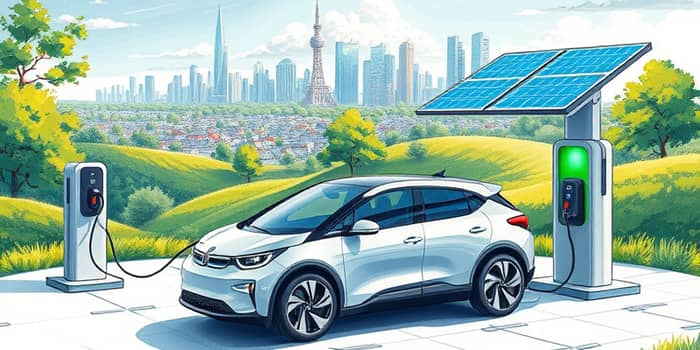
The automotive industry is undergoing a profound transformation as manufacturers and consumers alike embrace the electric revolution. What began as a niche segment has rapidly morphed into a mainstream juggernaut, with record sales, technological breakthroughs, and bold policy mandates reshaping the global landscape.
In 2024, global EV sales soared past 17 million units, constituting over 20% of new car sales worldwide. This seismic shift represents a tripling in four years and underscores how swiftly the sector is moving toward a low-carbon future.
The pace of EV adoption shows no sign of slowing. Analysts predict that more than 20 million EVs will be sold in 2025, accounting for over one-quarter of new vehicle sales. By 2030, electric models could capture 45–50% of global passenger car sales.
Regional leaders are setting the pace:
In the United States, EV market share climbed to 7.5% in Q1 2025, with nearly 300,000 units sold—a year-over-year jump of 11.4%.
The competitive landscape is evolving as legacy automakers race to catch up with disruptive startups. Tesla still commands a commanding 43.4% share of the U.S. EV market, despite a slight year-over-year dip in sales.
At the same time, General Motors has doubled its EV sales since Q1 2024, and other established brands such as Volkswagen, Honda, and Stellantis are launching new models to stake their claim.
Emerging Chinese brands like BYD are not just focused on domestic dominance—they’re setting their sights on global expansion, intensifying competition and pushing Western manufacturers to innovate faster.
Price pressures and supply chain constraints posed challenges in 2023, but the industry rebounded strongly in 2024, as battery supply stabilized and manufacturers optimized logistics.
Several key technologies are catalyzing this rapid transformation and making EVs increasingly attractive to a broad range of buyers:
Charging infrastructure is expanding at a breakneck pace, with high-power DC fast chargers becoming commonplace along highways and in urban centers. This network build-out is critical to alleviate range anxiety and support long-distance travel.
Governments around the world are leveraging policy tools to accelerate EV adoption. Over 50 countries and numerous U.S. states plan to ban new internal combustion engine car sales between 2030 and 2050.
More than 140 nations have pledged net-zero targets by mid-century, translating into stricter emissions standards, subsidies for EV purchases, and investments in renewable energy infrastructure.
Regional highlights include:
Modern EV buyers are increasingly drawn to SUVs, crossovers, and pickup trucks—segments once dominated by gasoline models. Automakers are responding with next-generation electric variants like the Chevy Equinox EV and Rivian R1T.
Barriers such as range anxiety and charging availability are steadily eroding thanks to ongoing improvements. Surveys reveal that over 60% of prospective buyers would consider an EV if upfront costs align with their budget and charging stations are readily accessible.
The road to 2030 and beyond is paved with both opportunities and challenges. Automakers are forging partnerships to build resilient supply chains, invest in battery recycling, and develop scalable manufacturing platforms.
Electrification is setting the stage for autonomous and shared mobility models, as electric platforms offer more predictable performance and total cost of ownership advantages.
While policy shifts and infrastructure gaps remain concerns, the momentum behind EVs is undeniable. As the world accelerates toward a cleaner, more connected future, the automotive sector stands at a pivotal crossroads, ready to drive innovation and sustainability for generations to come.
References













